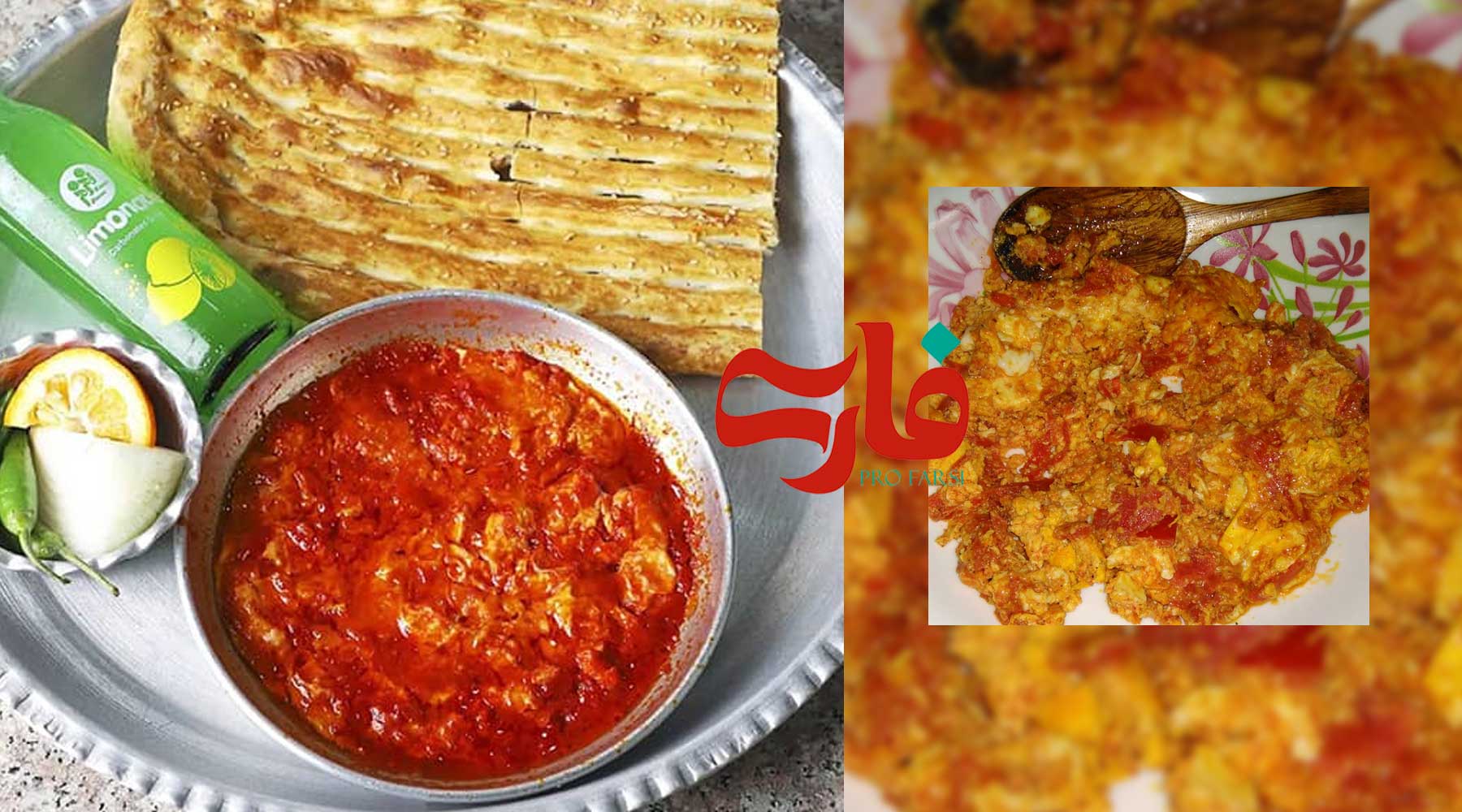Traditional Persian cuisine offers a tantalizing array of dishes that reflect the rich history and cultural diversity of Iran. Among these culinary treasures, the Persian omelet, known as “kuku” or “khagineh,” takes on a delightful twist when combined with the vibrant flavors of tomatoes. This tomato-infused omelet showcases the fusion of tangy sweetness and savory notes that epitomize Persian cuisine. By blending beaten eggs with a medley of fresh herbs, such as parsley, cilantro, and mint, along with diced tomatoes, onions, and aromatic spices like turmeric and cumin, the Persian tomato omelet presents a tantalizing burst of flavors. This beloved dish is often served as a hearty breakfast or a satisfying main course, embodying the artful combination of ingredients that have made Persian cuisine a true culinary delight.
There are several notable places where you can indulge in this culinary delight. In Iran, cities like Tehran, Shiraz, and Isfahan offer a myriad of restaurants and local eateries that specialize in Persian cuisine. These establishments provide a warm and inviting ambiance, allowing you to immerse yourself in the rich flavors of Persian cuisine. Additionally, Persian restaurants around the world, particularly in cosmopolitan cities like London, New York, and Dubai, bring the flavors of Iran to international audiences. These restaurants often feature Persian-inspired decor, creating a captivating atmosphere that complements the culinary experience.

What do you need to make Persian Omelette?
- Eggs: The foundation of the omelette is eggs. You will typically need 4-6 eggs, depending on the desired serving size. Beaten eggs provide the base and structure for the omelette.

- Fresh Herbs: Persian cuisine is renowned for its abundant use of fresh herbs. The omelette often incorporates a variety of herbs such as parsley, cilantro, dill, and mint. These herbs add a burst of freshness, vibrant flavors, and pleasing aromas to the dish. You can choose to use one or a combination of these herbs based on your preference.

- Tomato: Diced tomatoes play a significant role in this omelette variation. They add a juicy, tangy element to the dish. Choose ripe and flavorful tomatoes for the best results. Dice them into small pieces to ensure even distribution throughout the omelette.

- Onion: Finely chopped onion is a common ingredient in Persian omelettes. It adds a subtle sweetness and texture to the dish. Sauté the onions until they are translucent before incorporating them into the omelette mixture. This step helps enhance their flavor and soften their texture.

- Spices: Persian omelettes are often seasoned with a variety of spices. The most common spices used include turmeric, cumin, salt, and black pepper. Turmeric adds a vibrant yellow color to the omelette and imparts a warm and earthy flavor. Cumin enhances the overall aroma and provides a subtle hint of spiciness. Salt and black pepper are added to taste, enhancing the overall flavor profile of the dish.



- Cooking Oil: A neutral-flavored cooking oil, such as vegetable or olive oil, is used for sautéing the onions and greasing the pan. The oil prevents the omelette from sticking to the pan and helps achieve a desirable texture.

To make a delicious Persian omelette with tomato, you will need the following ingredients and their explanations, along with a recipe to guide you:
Ingredients:
- 4-6 eggs: Eggs serve as the base for the omelette, providing structure and texture.
- Fresh herbs (parsley, cilantro, dill, and mint): Finely chopped fresh herbs add vibrant flavors and aromas to the omelette.
- 1 tomato: Ripe and flavorful tomatoes, diced into small pieces, contribute a tangy and juicy element to the dish.
- 1 small onion: Finely chopped onion adds a subtle sweetness and texture to the omelette.
- 1/2 teaspoon turmeric: Turmeric gives the omelette a vibrant yellow color and adds a warm, earthy flavor.
- 1/2 teaspoon ground cumin: Cumin enhances the overall aroma and provides a subtle hint of spiciness.
- Salt and black pepper to taste: These seasonings enhance the overall flavor profile of the omelette.
- Cooking oil: A neutral-flavored cooking oil, such as vegetable or olive oil, is used for sautéing the onion and greasing the pan.
Recipe:
- Heat a tablespoon of cooking oil in a pan over medium heat.
- Add the finely chopped onion to the pan and sauté until it becomes translucent and lightly golden.
- In a mixing bowl, beat the eggs until well combined.
- Add the diced tomatoes, chopped fresh herbs, turmeric, cumin, salt, and black pepper to the beaten eggs. Mix everything together until evenly distributed.
- Pour the egg mixture over the sautéed onions in the pan. Spread it evenly.
- Cook the Omelette on medium-low heat for about 5-7 minutes, or until the bottom is set and golden brown.
- Gently flip the Omelette using a spatula or plate, and cook the other side for an additional 4-5 minutes until fully cooked.
- Once cooked through, remove the Omelette from the pan and transfer it to a serving plate.
- Cut the Omelette into wedges or squares and serve hot as a main dish or part of a larger meal.
- You can garnish the Omelette with extra fresh herbs, if desired, and serve it with bread, yogurt, or a side salad for a complete meal.

How many calories are in a tomato omelette?
The number of calories in a tomato omelette can vary based on the specific recipe and portion size. However, I can provide you with a general estimate of the calorie content.
On average, a plain tomato omelette made with 4-6 eggs, one tomato, and basic seasoning can contain approximately 200-300 calories. This estimate includes the calories from eggs, tomatoes, and a small amount of cooking oil used for preparation. Keep in mind that adding additional ingredients, such as cheese, vegetables, or meats, will increase the overall calorie count.
It’s important to note that the calorie content of any dish can vary based on factors such as the size of the ingredients used, the cooking method, and the specific brand or type of ingredients chosen. If you’re looking for a more precise calorie count for your tomato omelette, it’s recommended to input the specific ingredients and their quantities into a nutrition calculator or consult a registered dietitian.
Related Posts











